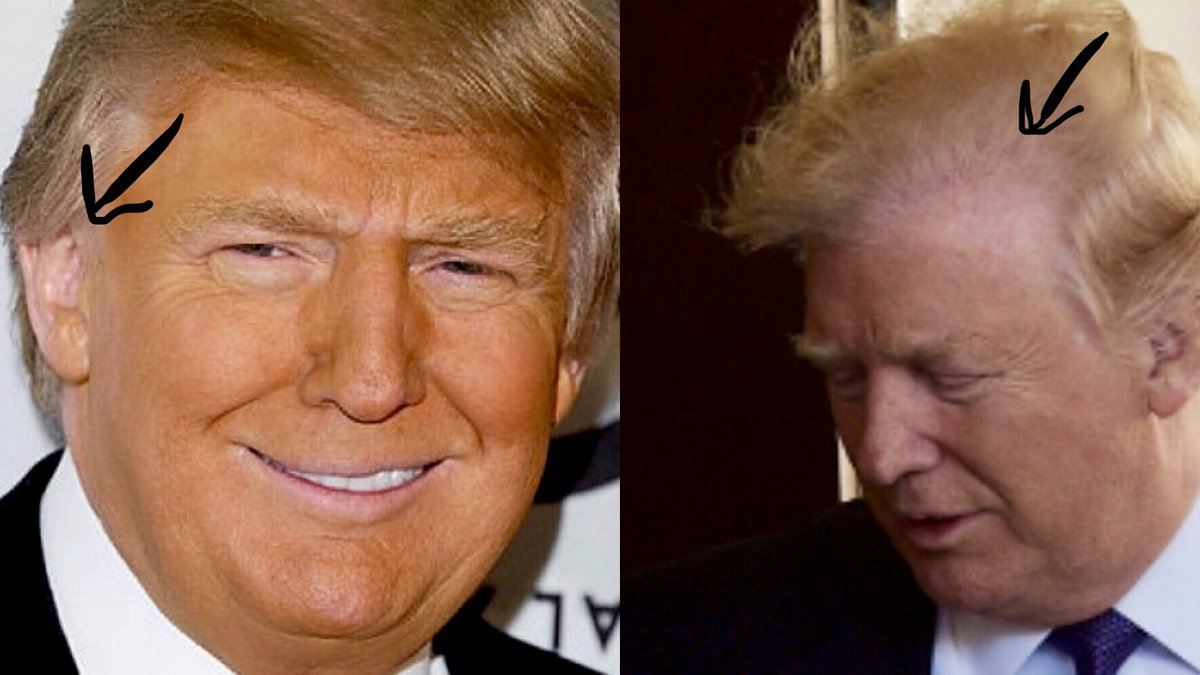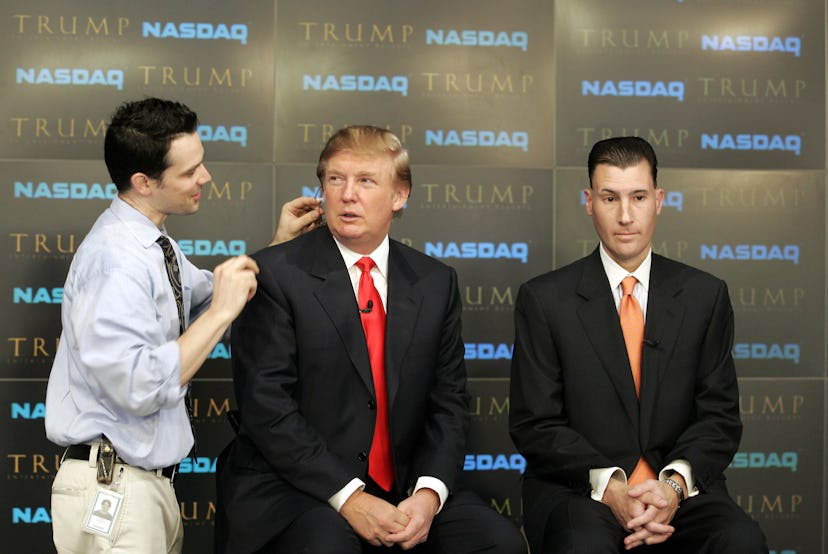Donald Trump's Makeup Mystery: Here's What You Need To Know
Is it possible that a carefully constructed image is unraveling before our eyes? Donald Trump's public persona, particularly his famously bronzed complexion, has long been a subject of intense scrutiny and, at times, outright ridicule.
The story of the former president's face has become a recurring narrative in the media, a blend of political commentary, speculation, and the ever-present allure of a good "makeup mishap." The most recent iteration of this story involves a photo taken in July 2022, at a golf course, where Trump appeared noticeably different. Absent his usual orange hue, his face was described as red and blotchy. This image, unlike many others, wasn't meant for wide dissemination, yet it quickly circulated, sparking renewed curiosity and debate about the man's cosmetic choices.
The origins of Trump's orange skin have been attributed to a variety of factors. One theory, supported by insiders, suggests that the use of makeup is a way to conceal the effects of rosacea. This condition, characterized by redness and blotchiness, could be a source of insecurity, prompting Trump to consistently apply makeup, even though it often results in a much less natural appearance. Professional makeup artists, like Safia Cox, have weighed in, offering their perspectives on the application and the potential motivations behind it.
- Movierulz 2025 Latest Telugu Movies Trends Stay Updated
- Trending Now Latest Telugu Releases More Refer Earn Gold
Details surrounding Trump's makeup regime are quite specific. Sources claim that he uses a translucent makeup powder before television appearances and has even gone so far as to adjust lighting at White House events. The Swiss cosmetics brand Bronx Colors has been linked to his look, with the housekeepers claiming they had to keep precisely 2.5 containers of the cosmetic in his bedroom.
The evidence isn't limited to speculation. A 2020 photo, for example, revealed orange stains on a shirt collar, matching Trump's skin tone. Accounts from those who worked with him, including Jordan, reveal instances of makeup-related frustration, like an outburst over stains on his golf shirts. Former staff members have also shared stories about the meticulous care taken to maintain the desired appearance.
| Category | Details |
|---|---|
| Full Name | Donald John Trump |
| Born | June 14, 1946 (age 77) in Queens, New York City |
| Political Party | Republican |
| Education | Fordham University, University of Pennsylvania (B.S. in Economics) |
| Previous Roles | 45th President of the United States (2017-2021), Business Executive, Television Personality |
| Known For | Real estate development, reality television (The Apprentice), presidency |
| Business Ventures | The Trump Organization (real estate, hotels, casinos, golf courses), Trump Entertainment Resorts |
| Website | Donald J. Trump Official Website |
The reaction from the internet, as one might expect, has been swift and varied. Social media users have seized on the "makeup blunders," sharing their thoughts and mocking the visible inconsistencies. The phrase "Donald Trump wears more makeup than Kamala Harris" has been used.
- Where To Watch Stream Movies Your Ultimate Guide 2024
- Hdhub4u Watch Download Movies What You Need To Know
The incident is far from isolated. Numerous instances of Trump's appearance have made headlines. His ever-changing orange tint is now considered a staple of his image, one that has been discussed on countless occasions. The recurring theme raises an important question, whether this is a matter of vanity or a conscious effort to shape his public persona.
Even though the campaign has said that he doesn't use makeup, the evidence suggests otherwise. Trump's look has, for better or worse, become one of the defining presidential looks of the 21st century. The subject is not merely about cosmetics, but about how an individual presents himself to the world and the lengths he is willing to go to maintain that image.
It's important to note that professional makeup artists have been consulted in this matter. As of 2023, the former president was still enlisting the services of Kriss Blevens, who has been his presidential makeup artist.
While the exact reasons remain a matter of conjecture, the story of Donald Trump's makeup choices is a potent example of how appearance can intersect with politics and public perception, making his aesthetic a constant subject of commentary and criticism.
Article Recommendations
- Movierulz 2025 Latest Telugu Tamil More Watch Now
- Telugu Movies Movierulz Updates Latest News Streaming Info



Detail Author:
- Name : Leanne Block IV
- Username : pschuster
- Email : astreich@hotmail.com
- Birthdate : 1987-06-23
- Address : 135 Schimmel Tunnel New Hayleymouth, WV 20862
- Phone : 872-810-3265
- Company : Hagenes LLC
- Job : Photographic Process Worker
- Bio : Hic cumque aut et error non et error sequi. Vitae eligendi aut optio in error.
Socials
twitter:
- url : https://twitter.com/zella_xx
- username : zella_xx
- bio : Incidunt fugiat qui vero minus. In ut et consequuntur est. Ut ipsa sed illo odio. Similique sequi consequatur sed et dolores eius illum magni.
- followers : 4913
- following : 2829
instagram:
- url : https://instagram.com/zella500
- username : zella500
- bio : Mollitia dolores labore veniam et numquam. Laboriosam non non voluptatem ea.
- followers : 3322
- following : 1426
facebook:
- url : https://facebook.com/zmayer
- username : zmayer
- bio : Ut eum officiis et voluptas facere soluta. Officia rem dolores tempore.
- followers : 5261
- following : 79
linkedin:
- url : https://linkedin.com/in/zella5434
- username : zella5434
- bio : Blanditiis adipisci unde voluptas magni.
- followers : 285
- following : 2625
tiktok:
- url : https://tiktok.com/@mayerz
- username : mayerz
- bio : Aut necessitatibus quam occaecati laborum incidunt illo.
- followers : 1596
- following : 59